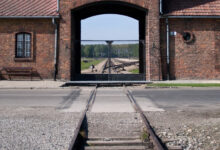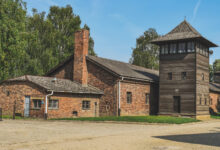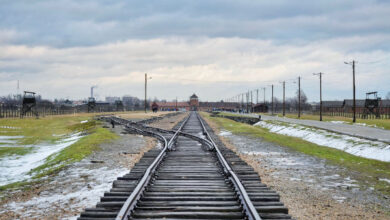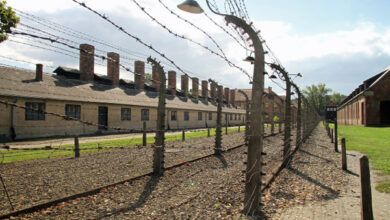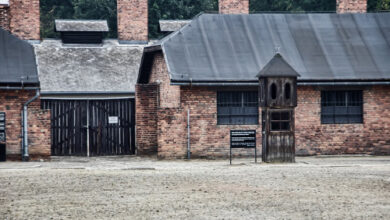Was Treblinka Worse than Auschwitz?
The Horrors of Treblinka: Was it Even Worse than Auschwitz?
When examining the atrocities of the Holocaust, the names Treblinka and Auschwitz carry with them a weight of history and horror. These two sites were among the most notorious extermination camps where the Nazis implemented their genocidal plans against the Jews and other marginalised groups during World War II.
The question of whether Treblinka was worse than Auschwitz is complex, for the term ‘worse’ encompasses a range of factors including the number of victims, conditions of imprisonment, methods of killing, and the camps’ roles in the wider context of the Holocaust.
Treblinka and Auschwitz represented different models within the Nazi camp system. Treblinka, as part of Operation Reinhard, was designed and operated primarily for the swift extermination of Jews. Its infrastructure, while horrifically efficient in its purpose, was smaller in scale compared to Auschwitz.
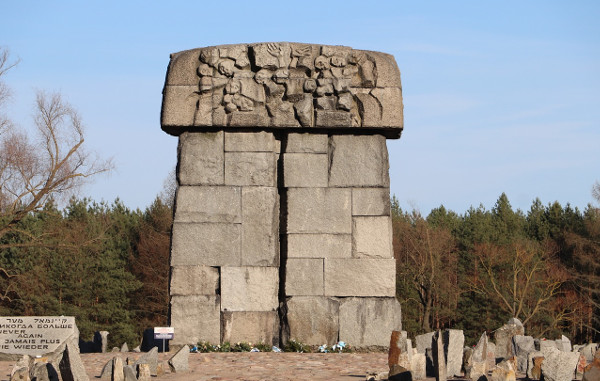
Auschwitz, by contrast, functioned as both a work camp and an extermination site, becoming a symbol of the Holocaust partly due to its larger size, the number of victims, and its preservation as a memorial.
The two camps’ operations, although driven by the same genocidal intent, varied in their mechanisms and the sheer scale of their destructive capabilities.
While Treblinka was not as extensively documented or as widely known as Auschwitz, its impact was nonetheless devastating. The question of comparative analysis between two centres of such extreme human suffering is fraught with ethical considerations, and the assessment should be approached with sensitivity and a commitment to historical accuracy.
Table of Contents:
Key Takeaways
- Treblinka and Auschwitz were central to the Nazi extermination efforts but differed in function and operation.
- Auschwitz’s dual role as a labour and extermination camp contributed to its infamy and higher victim count.
- Comparative discussions of Holocaust camps should remain respectful and focus on factual historical interpretation.
Historical Context
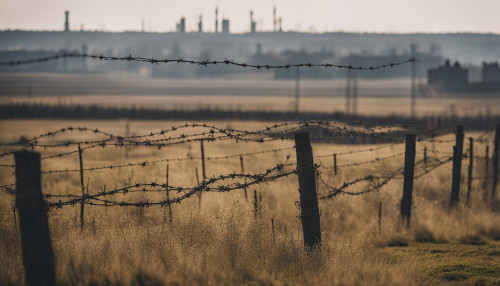
In examining the historical context of Treblinka and Auschwitz, you must consider the broad framework of the Holocaust and the Final Solution, the specifics of Nazi occupation in Poland, and the targeted extermination efforts under Operation Reinhard.
The Holocaust and Final Solution
The Holocaust was the systematic, state-sponsored persecution and annihilation of six million Jews by Nazi Germany and its collaborators during World War II. The “Final Solution to the Jewish Question” was a Nazi plan for the genocide of the Jews during the war.
Orchestrated primarily by high-ranking officials, it sought to eradicate the entire Jewish population of Europe through a combination of mass shootings, forced labour, and extermination camps.
Nazi Occupation in Poland
In September 1939, Nazi Germany invaded Poland, marking the beginning of World War II. Following the occupation, Poland was partitioned, and the largest portion was incorporated into the General Government, a colonial administration.
Under this regime, Jews and other perceived enemies of the Nazi state were subjected to severe oppression, forced into ghettos, and systematically murdered.
Operation Reinhard
Operation Reinhard was the codename for the secret Nazi German plan to mass-murder Polish Jews in the General Government, leading to the operation of death camps such as Treblinka.
By the operation’s end, it is estimated that about 1.7 to 2 million people were killed under its auspices, with Treblinka alone accounting for approximately 750,000 to 900,000 victims.
These camps represented the epitome of the Nazis’ efforts to carry out the Final Solution through industrialised killing.
Understanding of Treblinka’s and Auschwitz’s roles within the larger context of the Holocaust is crucial in discerning factual comparisons between these sites of unimaginable human suffering.
Extermination Camps Defined
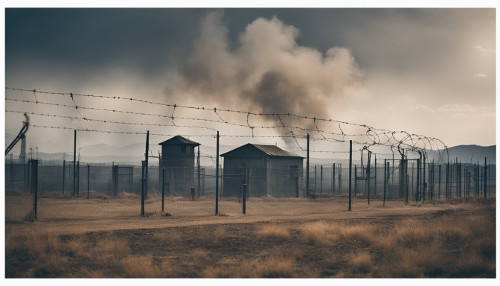
When you consider the atrocities of World War II, extermination camps, also called death camps, primarily symbolise the places built by Nazi Germany for the mass killing of Jews as part of the Final Solution. These camps were pivotal to the Holocaust, featuring systematic extermination methods like gas chambers.
Treblinka Death Camp
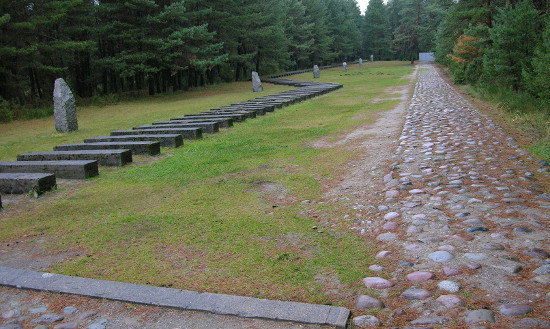
Treblinka II, the more infamous of the two camps within the Treblinka complex, stands out as one of the most lethal extermination camps after Auschwitz. It operated between July 1942 and August 1943, and estimates suggest that approximately 750,000 to 900,000 Jews were murdered here.
Treblinka’s infrastructure focused on the efficient mass murder of its victims, utilising gas chambers as its primary method of extermination.
Auschwitz-Birkenau Complex
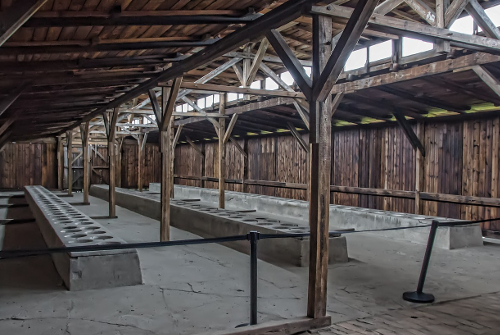
In contrast, the Auschwitz-Birkenau complex served multiple purposes: it was a concentration camp, an extermination camp, and a forced labour camp. Located in occupied Poland, the complex was the largest of its kind and functioned from May 1940 until its liberation in January 1945.
It is estimated that up to 1.1 million people were killed at Auschwitz, most of whom were Jews. The site featured a series of gas chambers and crematoria used for mass executions. Read also Auschwitz Tours from Krakow
Comparison of Camp Purposes
- Treblinka: Primarily served as an extermination camp under Operation Reinhard, to systematically murder Jews.
- Auschwitz-Birkenau: Served as a combined concentration and extermination camp, with a significant part of its detainees also subjected to forced labour.
Treblinka and Auschwitz represent the extreme end of the spectrum of Nazi concentration camps, both deeply integrated into the Nazi’s plan to execute the Final Solution. The key distinction between them lies in the broader function of Auschwitz as a labour camp, whereas Treblinka’s purpose was exclusively for extermination.
Victims of the Camps
You should understand the scope of human loss and the demographics that were targeted at Treblinka and Auschwitz, two of the most notorious extermination camps during the Holocaust.
Demographics Affected
At Auschwitz, a mix of victims including Jews, Romani people, and non-Jewish Poles, among others, suffered immeasurably. The camp was the largest and functioned not only as an extermination site but also as a concentration and labour camp, meaning the range of people affected was broader.
In contrast, Treblinka was almost exclusively used for the extermination of Jews, particularly those from Polish ghettos. European Jews were the primary demographic affected, with the camp’s operation being a direct outcome of Operation Reinhard, the German plan to murder the Jews of occupied Poland.
Magnitude of Loss
- Auschwitz:
- Estimated at over 1 million Jews.
- Tens of thousands of others, including Romani people.
- Treblinka:
- Approximately 870,000 to 925,000 Jews murdered within about a year.
- A majority of these victims, over 700,000, were killed by the end of 1942.
These statistics convey the sheer magnitude of loss, demonstrating that, while the focus of Treblinka was narrower, the efficiency and speed at which the extermination occurred made it one of the deadliest camps of the Nazi era.
Camp Infrastructure and Operations
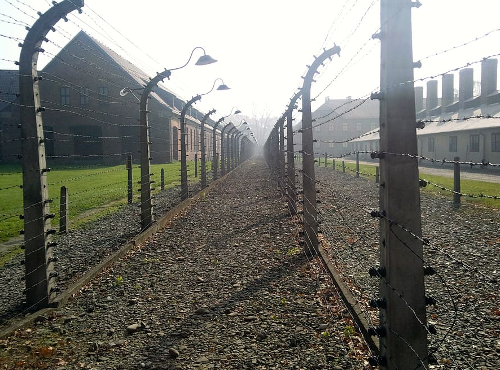
In comparing the infrastructure and operations of Treblinka and Auschwitz, you’ll see a marked difference in their primary functions; Treblinka was primarily an extermination camp while Auschwitz combined labour and extermination facilities.
Life in Treblinka
Treblinka was designed exclusively for the swift extermination of its prisoners, meaning life within the camp was brutal and short-lived for most. Upon your arrival through the railway station, if you were deemed unfit for forced labour, you would likely be directed towards the gas chambers within hours.
The facilities consisted of extremely limited barracks for those temporarily kept alive for work, guarded by SS and Trawniki guards. The camp lacked the extensive infrastructure found in other camps, not intended for long-term inhabitance by the inmates.
Life in Auschwitz
In contrast, Auschwitz encompassed a more complex infrastructure, combining extermination with forced labour. The camp featured numerous barracks for housing inmates, who were regularly counted and selected for work or extermination.
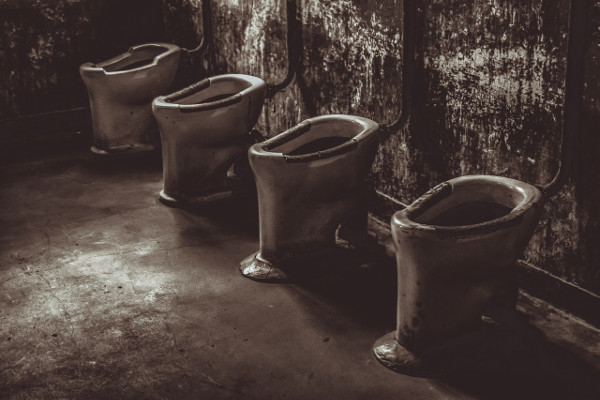
The prisoners, under the watchful eye of the SS guards, were subjected to harsh conditions, but the camp maintained a more defined and prolonged daily life for those not immediately sent to the gas chambers.
Death and Killing Methods
Treblinka primarily used carbon monoxide in gas chambers to carry out mass extermination. The camp was designed for speed and efficiency in killing, with a near-exclusive focus on death rather than imprisoning inmates for labour.
Auschwitz, on the other hand, initially used Zyklon B – a cyanide-based pesticide – in its gas chambers. The killing process was industrial in scale, with Auschwitz also undertaking gruesome medical experiments on prisoners.
The camp saw the systematic extermination of large numbers alongside its role in forced labour, making it one of the deadliest locations in the concentration camp network.
In summary, you can perceive that Treblinka’s design was centred on the quick elimination of prisoners, whereas Auschwitz maintained additional functions, having extensive barracks and working areas alongside its systematic extermination operations. The experiences and daily life of an inmate, as well as the death methods used, differed significantly between the two.
Resistance and Uprisings
As you explore the harrowing history of the Holocaust, it’s crucial to recognise the acts of resistance and the uprisings that unfolded. Even in the face of overwhelming oppression, the Jewish prisoners fought back with resilience and bravery. The Warsaw Ghetto Uprising and the Treblinka Revolt stand as testaments to this spirit of defiance.
Warsaw Ghetto Uprising
In early 1943, the Jews confined within the Warsaw Ghetto initiated a valiant uprising. This rebellion was a direct response to the Nazi plan to liquidate the ghetto, which had already seen the deportation of thousands to extermination camps.
The Warsaw Ghetto Uprising remains one of the most significant instances of Jewish resistance against the Nazis during World War II, symbolising the struggle for survival and dignity. Armed primarily with homemade weapons and limited firearms, the Jewish fighters held out for nearly a month before the uprising was brutally suppressed.
Treblinka Revolt
On the 2nd of August, 1943, around 1,000 Jewish inmates at the Treblinka extermination camp staged a bold revolt. Faced with extermination, these prisoners orchestrated a planned resistance that included setting buildings ablaze and storming the camp’s armory to access weapons.
The Treblinka Revolt led to the escape of several hundred prisoners, although many were later recaptured or killed.
Despite the high number of casualties, the rebellion allowed a small number of survivors to share their testimony, shedding light on the horrific conditions within the camp and the indomitable will of those who fought back.
Post-War Impact
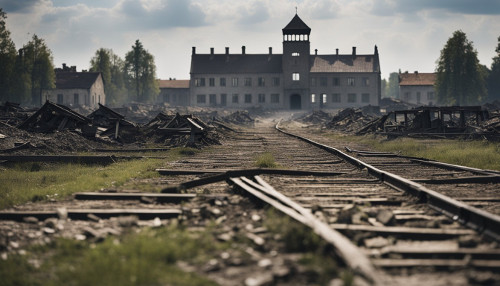
After the war, the focus on Treblinka and Auschwitz transitioned from perpetration to remembrance and justice. Your understanding of this period is crucial in grasping the societal and judicial aftermath of these camps.
Trials and Accountability
You’ll find that in the aftermath of World War II, a series of trials were conducted to hold Nazi war criminals accountable. The most prominent of these were the Nuremberg Trials.
In the case of Treblinka, fewer SS men were brought to trial compared to Auschwitz, reflecting the fewer survivors and the destruction of evidence. Among the specific trials for Treblinka perpetrators was the Düsseldorf Treblinka Trials, which ran from 1964 to 1970.
The Treblinka Trials led to the conviction of numerous individuals directly involved in the camp’s operations.
- Kurt Franz, the last commandant of Treblinka, was sentenced to life imprisonment.
- Franz Stangl, the camp’s former commandant, was apprehended and received a life sentence as well but died in 1971.
Memorials and Education

The sites of these former camps serve as potent memorials and educational resources. At Treblinka, the Treblinka Museum of Struggle and Martyrdom was established to foster education about the atrocities committed there.
It is important to recognise the role of these memorials in preserving the memory of the victims.
- The Treblinka Memorial, with its 17,000 stones, symbolises the countless lives lost.
- Various memoirs penned by survivors serve educational purposes, offering personal insights into the experiences endured during the Holocaust.
Both Auschwitz and Treblinka have become poignant reminders of the past, ensuring that the lessons learned from their history are not forgotten.
Public Perception and Media

Your understanding of the Holocaust and its death camps, particularly Treblinka and Auschwitz, is often shaped by their portrayal in media and the challenges posed by historical revisionism.
Depictions in Literature and Film
Treblinka and Auschwitz have been represented in various forms of literature and film, creating a vivid image of their realities. While Auschwitz as an extermination camp has been depicted more frequently due to its larger size and the number of survivors, Treblinka’s portrayal often emphasises the sheer horror and the efficient extermination process that took place.
Films such as Treblinka’s Last Witness and books like The Treblinka Death Camp: History, Biographies, Remembrance bring to light individual stories and broader narratives of suffering and resilience which underscore the horrific nature of these camps.
- Literature: Books and personal memoirs provide you with detailed accounts that capture the harrowing experiences of Treblinka’s victims.
- Film: Cinematic interpretations shape public perception and provide a visual representation of the history, often highlighting the stark contrast between the camps.
Historical Revisionism and Denial
Despite the abundance of factual information and survivor testimonies, you must be aware that Treblinka and Auschwitz have been subjects of historical revisionism and denial.
Revisionist claims attempt to understate the number of deaths or outright deny the occurrence of extermination, despite overwhelming evidence to the contrary.
- Challenges: You should recognise the ongoing battle against misinformation that seeks to distort and minimise the historical record of the extermination carried out at these camps.
- Significance: Understanding and debunking such claims is crucial for an accurate remembrance of the Holocaust’s horrors and ensuring the truth prevails.
Archaeological and Forensic Investigations
In uncovering the tragic history of Treblinka, your understanding of the site is deepened through recent archaeological and forensic efforts. These scientific investigations provide tangible evidence of the atrocities committed, and offer insight into the scale and mechanisms of the mass murders that occurred.
Excavations at Treblinka
Your awareness of Treblinka’s grim past is enhanced by the knowledge that in recent years, archaeologists have conducted systematic excavations at the site of the former Nazi death camp.
These excavations have unveiled mass graves and provided the first physical evidence of gas chambers, which were used for the extermination of human lives.
The soil of Treblinka reveals a morbid tapestry of burned remains and sorrow, with the excavations unraveling layers of ashes and soil that were used to cover the crimes. This ground, once soaked with the blood of victims, gives you a silent narrative of the horrors beneath.
Identification of Remains
When archaeologists excavate sites such as Treblinka, forensic methods are crucial in the identification of remains.
In Treblinka, the personal tragedies of those who perished are told through the fragments of bones and the details uncovered during the excavations.
Genetic testing and forensic analysis are employed where possible to give names back to the victims. However, the identification process is immensely challenging due to the Nazis’ attempts to obliterate evidence by burning the bodies.
In 2019, a discovery of a mass burial pit with commingled human skeleton remains highlighted the enormous scale of the crimes and the complicated task of forensic scientists attempting to piece together the evidence amidst ashes and charred remains.
Comparative Analysis
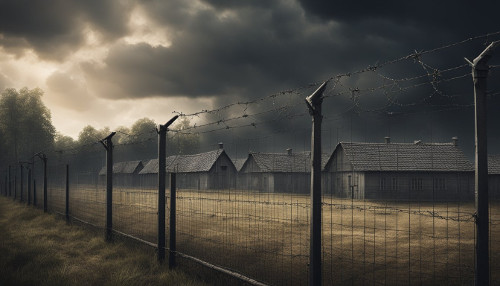 Your exploration of the relative severity of Treblinka and Auschwitz hinges on a direct assessment of recorded facts and psychological ramifications associated with these Holocaust tragedies.
Your exploration of the relative severity of Treblinka and Auschwitz hinges on a direct assessment of recorded facts and psychological ramifications associated with these Holocaust tragedies.
Statistical Overview
Treblinka:
- Death Toll: Historically, more than 800,000 victims were murdered at Treblinka.
- Operational Period: July 1942 – November 1943
Auschwitz:
- Death Toll: Over 1.1 million victims perished at Auschwitz.
- Operational Period: May 1940 – January 1945
Comparison Table:
| Entity | Treblinka | Auschwitz |
|---|---|---|
| Death Toll | >800,000 | >1.1 million |
| Operational Time | ~1 year 4 months | ~4 years 8 months |
| Liberation Status | Not Liberated | Liberated |
| Survivors | Few | More |
The stark figures reflect that Auschwitz had a higher death toll and a longer period of operation, but the speed of mass murder at Treblinka was abnormally high within its shorter time frame.
Psychological Impact
You must understand that both Treblinka and Auschwitz inflicted profound psychological trauma on survivors, victims, and subsequent generations.
Treblinka’s near-total destruction by the Nazis, in a bid to hide their crimes, resulted in a scarcity of eyewitness accounts, which amplifies its enigmatic presence in history.
Auschwitz, by contrast, stands as the more documented and preserved site, symbolising the extensive horrors of the Holocaust.
The experiences of those who endured the brutality at these camps are individual and encompass an entire spectrum of psychological impacts. Characterising one camp as ‘worse’ than another does not sufficiently encapsulate the multifaced atrocities committed within each.
Further Research and Literature
 To understand the complexities surrounding the history of Treblinka and Auschwitz, you should delve into a variety of scholarly works and personal accounts. These references will offer diverse perspectives on the events and help form a nuanced understanding.
To understand the complexities surrounding the history of Treblinka and Auschwitz, you should delve into a variety of scholarly works and personal accounts. These references will offer diverse perspectives on the events and help form a nuanced understanding.
Academic Studies
Academic research on Treblinka and Auschwitz encompasses a number of peer-reviewed studies and historical analyses. These works often contrast the scale, implementation, and impact of the two camps. For instance:
- Journals: Seek out articles from journals like The Holocaust and Genocide Studies which provide in-depth evaluations of the camps’ roles in the Holocaust.
- Comparative Studies: Look for papers comparing the death tolls, operational methods, and eventual liberation of Treblinka and Auschwitz.
Key scholars in Holocaust studies might include Raul Hilberg, Christopher Browning, and Ian Kershaw, among others. Their works will offer you a comprehensive understanding of the events from an academic standpoint.
Personal Narratives and Witness Accounts
Personal narratives and memoirs of survivors provide intimate insights into the day-to-day realities of life in the camps. Additionally, witness testimonies contribute to understanding the severity of the conditions within them.
- Memoirs by Survivors: Books like The Last Jew of Treblinka by Chil Rajchman give a visceral account from a Jew who survived the camp.
- Testimonies: Collections of witness accounts, which may be found in the archives at Yad Vashem or the United States Holocaust Memorial Museum, offer direct witness narratives detailing individual experiences.
Personal narratives and memoirs are essential in paint a humane and personal picture of history, beyond the raw facts and figures that academic studies might provide.
